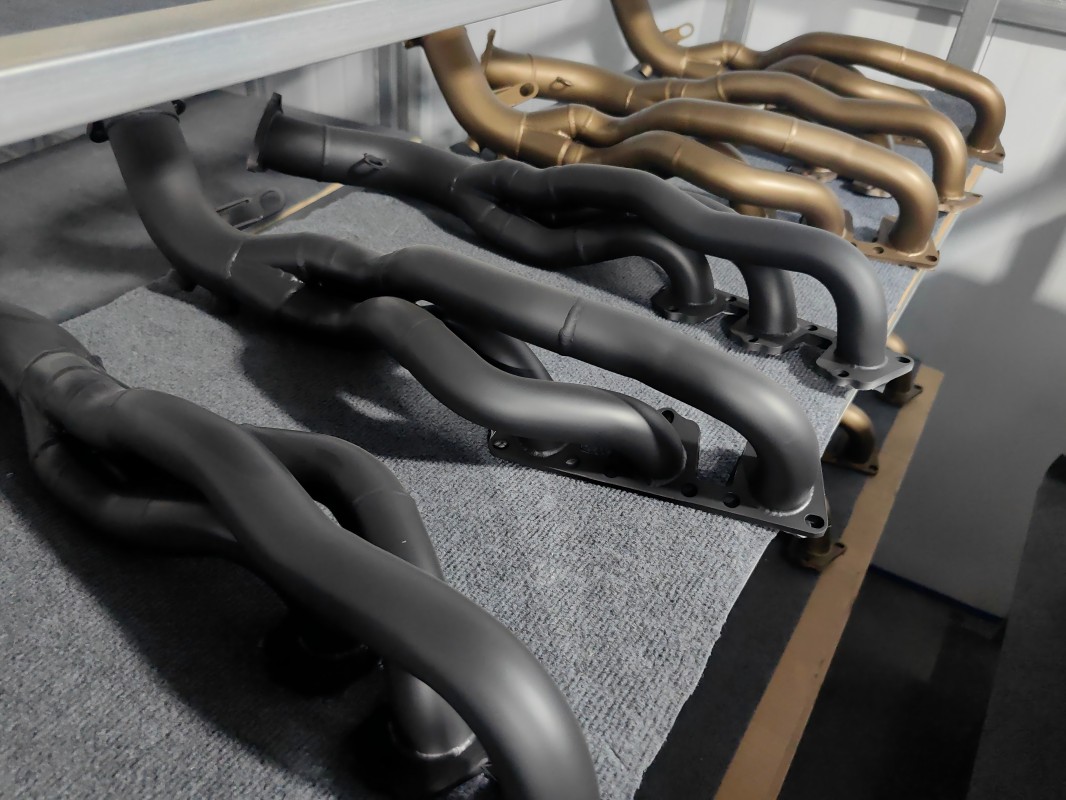Dans l'industrie automobile, la performance, la durabilité et l'efficacité sont des priorités absolues pour les constructeurs et les passionnés. Une technologie innovante qui a connu un succès considérable ces dernières années est le revêtement céramique (également appelé revêtement céramique pour échappement ou revêtement de barrière thermique) pour les systèmes d'échappement. Ce traitement avancé améliore les performances, réduit le rayonnement thermique et prolonge la durée de vie des composants d'échappement.
Dans ce blog, nous explorerons le fonctionnement du revêtement céramique, ses avantages et pourquoi il devient un choix populaire pour les véhicules hautes performances et de tous les jours.

Le revêtement céramique est un matériau résistant aux hautes températures appliqué sur les collecteurs d'échappement, les collecteurs d'échappement, les tuyaux de descente et autres composants. Il est composé d'un composé à base de céramique qui forme une couche protectrice lorsqu'il est durci à haute température (généralement au four, d'où le terme « revêtement céramique cuit »).
Principaux avantages des systèmes d'échappement à revêtement céramique
Les revêtements céramiques agissent comme une barrière thermique, gardant la chaleur à l'intérieur des gaz d'échappement plutôt que de la diffuser dans le compartiment moteur. Les gaz d’échappement plus chauds se déplacent plus rapidement (réduisant la contre-pression), ce qui peut améliorer l’efficacité et la puissance du moteur.
En minimisant le rayonnement thermique, les revêtements céramiques aident à prévenir l'absorption de chaleur, protégeant ainsi les composants à proximité tels que le câblage, les turbos et les systèmes d'admission.
Le couche de céramique protège le métal de l'humidité, du sel et de la corrosion chimique, prolongeant ainsi la durée de vie du système d'échappement.
Disponibles en différentes finitions (mates, brillantes ou colorées), les revêtements céramiques offrent un aspect élégant et uniforme tout en résistant à la décoloration due à la chaleur.
Contrairement aux revêtements d’échappement traditionnels (qui peuvent emprisonner l’humidité et se dégrader), les revêtements en céramique sont minces, légers et sans entretien.
La technologie de revêtement céramique offre une solution intelligente et durable pour améliorer les performances, la durabilité et l'efficacité des systèmes d'échappement. Que vous soyez un passionné de sport automobile en quête d'un avantage concurrentiel ou un utilisateur souhaitant protéger le système d'échappement de son véhicule, les revêtements céramiques offrent une amélioration des performances et des avantages durables.
Envisageriez-vous un revêtement céramique pour votre pot d'échappement de la voiture? Faites-le nous savoir dans les commentaires !